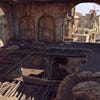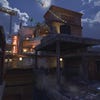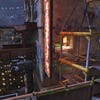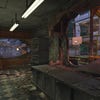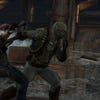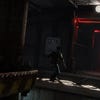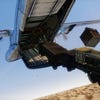Crafting Uncharted 3
Co-lead designer Richard Lemarchand on the "quite, quite mad" Naughty Dog.
At Eurogamer Expo 2011 Naughty Dog delivered a world exclusive gameplay demo of Uncharted 3: Drake's Deception, a game sure to be one of the PlayStation 3's biggest hits. Nathan Drake actor Nolan North and co-lead designer Richard Lemarchand wowed fans with the premiere, and offered insight into the development of the game.
Afterwards, Eurogamer sat down with Lemarchand for an extensive interview on the making of Uncharted, discussing everything from Uncharted's origins to the uncanny valley.
It's one of the ongoing challenges of video game design I suppose; how to find the right combination of all of the different play elements you have in your game to express the kind of thing you want to make. In the case of our single-player game, it's how to tell the kind of story we want to tell.
We are keen not to repeat ourselves with the Uncharted games. When you're making a game based on tropes from another well-respected forms - in our case pulp action adventure - it might be easy to fall into one kind of rut or another. So with this game we decided to switch things up a little bit, and it has seen us shift the focus we have on the different elements of the gameplay. We've been talking about the way we've put an increased focus on the fist fighting in the game, because that's an important part of pulp adventure. Most of the great pulp heroes are two-fisted sluggers. That gave us a great opportunity to try some new things in terms of game mechanics.
The game is partly a shooter, but it's also partly a platform game, partly a brawl game and partly a problem-solving puzzle game. Just like all of these different components, we try to bring a fresh eye to bear on the gun combat in the game. Like we do with every part of the game, we approached it on an experimental basis. At the beginning of the process we sat around and we talked about what we liked and disliked about the shooting in the last two game and what we'd like to see improved. There's always a dynamic tension in a modern shooter between how much help you give the player and how much you leave it to their own skill. So we did a lot under the hood to fine-tune that balance in Uncharted 3.
We also did some things that are on the boundary of cosmetic and functional. For the first time we've put an aiming dot in the centre of the screen when Drake has his gun out. We've found, as part of our play testing process, that was something players - especially players who weren't familiar with the Uncharted games - found really helpful as they oriented themselves to the combat and enemies in the game.
And lastly, we completely tore apart and rebuilt our AI systems. We had a lot of sophisticated AI in the last couple of games, but it was still fundamentally scripted. We would notice when there was an opportunity for the AI to flank the player, and then we would move the enemies on a flank path in stages, in the longhand manual way in script. But now the AI will do that themselves.
The issue of the uncanny valley is a complicated one. It's something we continue to talk about. There are lots of different approaches to depicting characters in computer graphics. You can take a more stylised approach, which is one way of avoiding falling into the uncanny valley, where you don't want to be, where the characters don't look empathetic. Pixar are really terrific for that. Pixar are a very interesting case study as regards the uncanny valley. Of course, the first Pixar film, which was very emotional and moving, featured two angle-poise lamps, which emoted beautifully even though they were just angle-poise lamps.
With the Uncharted games we've tried, in a way, to take a similar approach. We're not looking to emulate real reality. We go for a stylised reality, both in terms of the characters in the games and in the design and realisation of the worlds they inhabit.
That's coupled with the incredibly high quality animation our facial animators produce. Eric Baldwin and Kion Phillips are just two of the incredibly talented people who spend hours and hours studying the live action footage - they then synthesise that into the original animation they're doing as part of their roles in creating an Uncharted game. They don't just copy the reference footage. They're animators. They're originating expressions and motions.
Hopefully the response we've had from players to the Uncharted games shows there's a good line to be walked there, to stop you slipping into a place where it just looks weird and where the emotion of the situation can really shine through. That's what it's all about at the end of the day.










